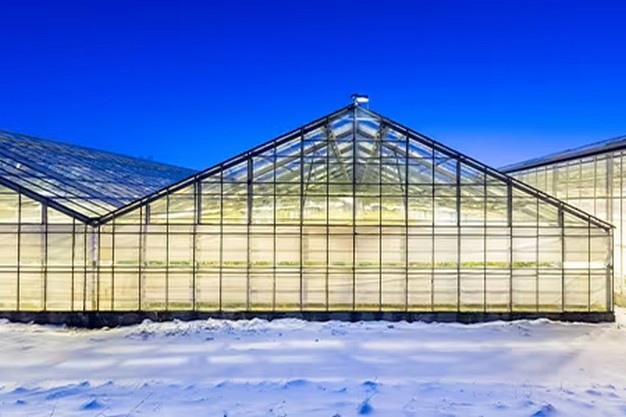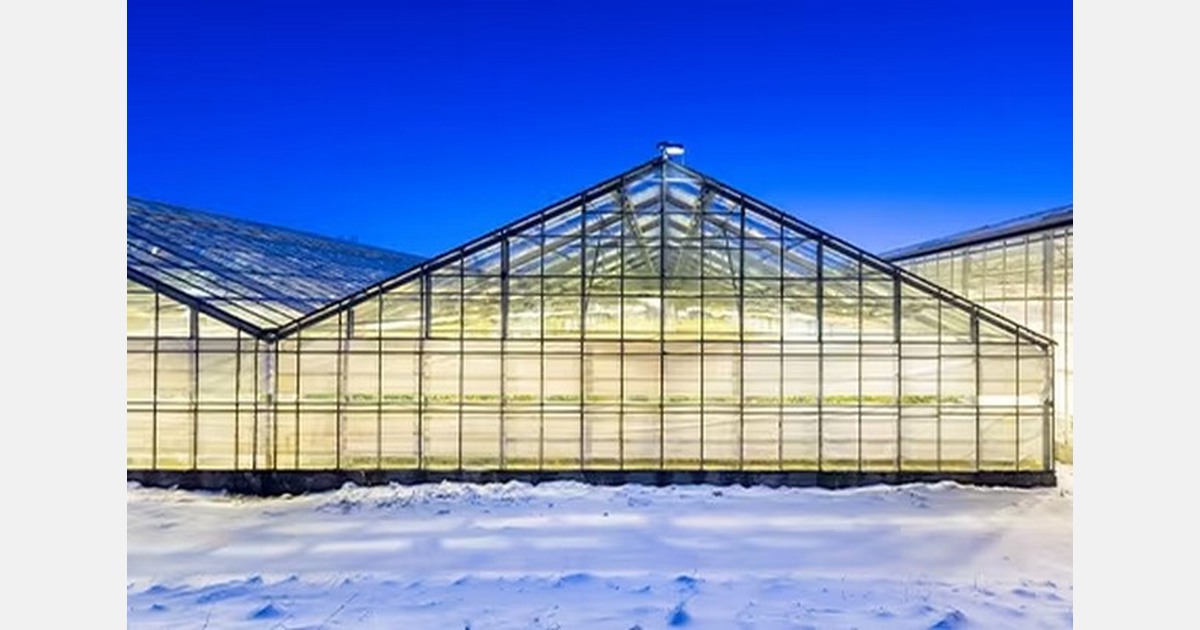Between 1980 and 2024, the National Oceanic and Atmospheric Administration (NOAA) recorded 403 billion-dollar weather and climate disasters in the United States. Of these, 69—about five percent—were due to cold waves and winter storms, causing nearly $140 billion in damages. For garden centers and greenhouses, where temperature, humidity, and light must be carefully managed, winter presents serious risks. Falling temperatures, snow, and ice can quickly threaten plants, infrastructure, and business operations. Proactive planning and strong insurance protection are key to avoiding costly setbacks.
One of the most common winter threats is extreme temperature fluctuation. When outside temperatures swing widely, maintaining consistent indoor warmth becomes difficult. A significant drop can damage plants or freeze pipes. Owners should identify cold spots and use supplemental heating or thermostats to stabilize conditions. Commercial property insurance can cover damaged equipment and inventory if temperature issues lead to losses.
Heavy roof snow loads are another major hazard. Excessive accumulation can strain or collapse roofs, damaging structures and plants below. The National Greenhouse Manufacturers Association advises heating greenhouses to at least 50°F two days before a snowfall to help melt snow as it falls. For larger storms, even higher temperatures may be necessary. Customized property insurance with roof collapse coverage can protect against the cost of such damage, while general liability insurance can cover injuries resulting from structural failures.
Energy curtain retraction issues can also worsen winter risks. If curtains remain closed during snow events, trapped heat cannot reach the roof to melt falling snow, increasing weight buildup. Curtains should retract when heating begins and close again at night to conserve energy. Properly functioning curtains are often covered under commercial property insurance.
Snow and ice accumulation on walkways create safety concerns for both staff and customers. Slick surfaces, puddles, and icy patches raise the likelihood of slip-and-fall accidents. Businesses should clear snow promptly, apply salt or deicer, and use heavy-duty mats indoors. General liability insurance can cover claims arising from these incidents.
Poor air circulation and ventilation can lead to condensation and uneven temperatures, especially when outdoor air is below 50°F. Moisture buildup on metal frames or glass can damage plants and structures. Constant use of circulation fans helps maintain even airflow and prevent condensation. Property insurance generally covers repair or replacement of ventilation and circulation equipment.
A malfunctioning heating system poses a direct threat to plant health. Regular maintenance of boilers and heating systems, along with alarm systems to detect failures, is essential. Backup heating sources should also be available. Insurance policies can include boiler and equipment breakdown coverage to mitigate financial loss from such failures.
Frozen pipes can burst and cause water damage. Insulating pipes, installing heating cables, and regulating pressure can help prevent freezing. Property insurance typically covers pipe repair and resulting water damage. Similarly, power outages can disrupt heating, lighting, and critical environmental systems. Installing backup generators ensures operations continue during outages, and business interruption coverage can help offset income losses.
 © Hortica
© Hortica
Unexpected mechanical, electrical, and plumbing (MEP) failures can also arise during winter when systems sit idle or face increased stress. These interconnected systems control key factors like temperature, humidity, and water flow. Regular inspections and maintenance are crucial. Commercial property insurance can cover losses from sudden breakdowns and electrical failures.
A lack of emergency preparedness can magnify the impact of any winter event. Every greenhouse and garden center should have a detailed plan for severe weather, power outages, and evacuations. Emergency supplies such as flashlights, radios, and first aid kits should be readily available. Business interruption coverage can provide critical financial support during closures caused by winter storms.
According to Zach Bruce, Director of Safety Services at Hortica, focusing on heater maintenance and temperature control before winter storms is essential. Snow and ice add significant operational challenges, making preparedness vital for protecting employees, customers, and property. Hortica offers specialized support for greenhouse and garden center operators, helping them assess risks, strengthen safety measures, and align insurance coverage with their operations.
Winter can be punishing for horticultural businesses, but proactive maintenance, strategic planning, and tailored insurance coverage can minimize disruption. By addressing vulnerabilities before cold weather arrives, businesses can protect their assets, maintain productivity, and ensure a safe environment for workers and customers alike.
Source: Hortica
For more information: Hortica
Hortica
www.hortica.com

